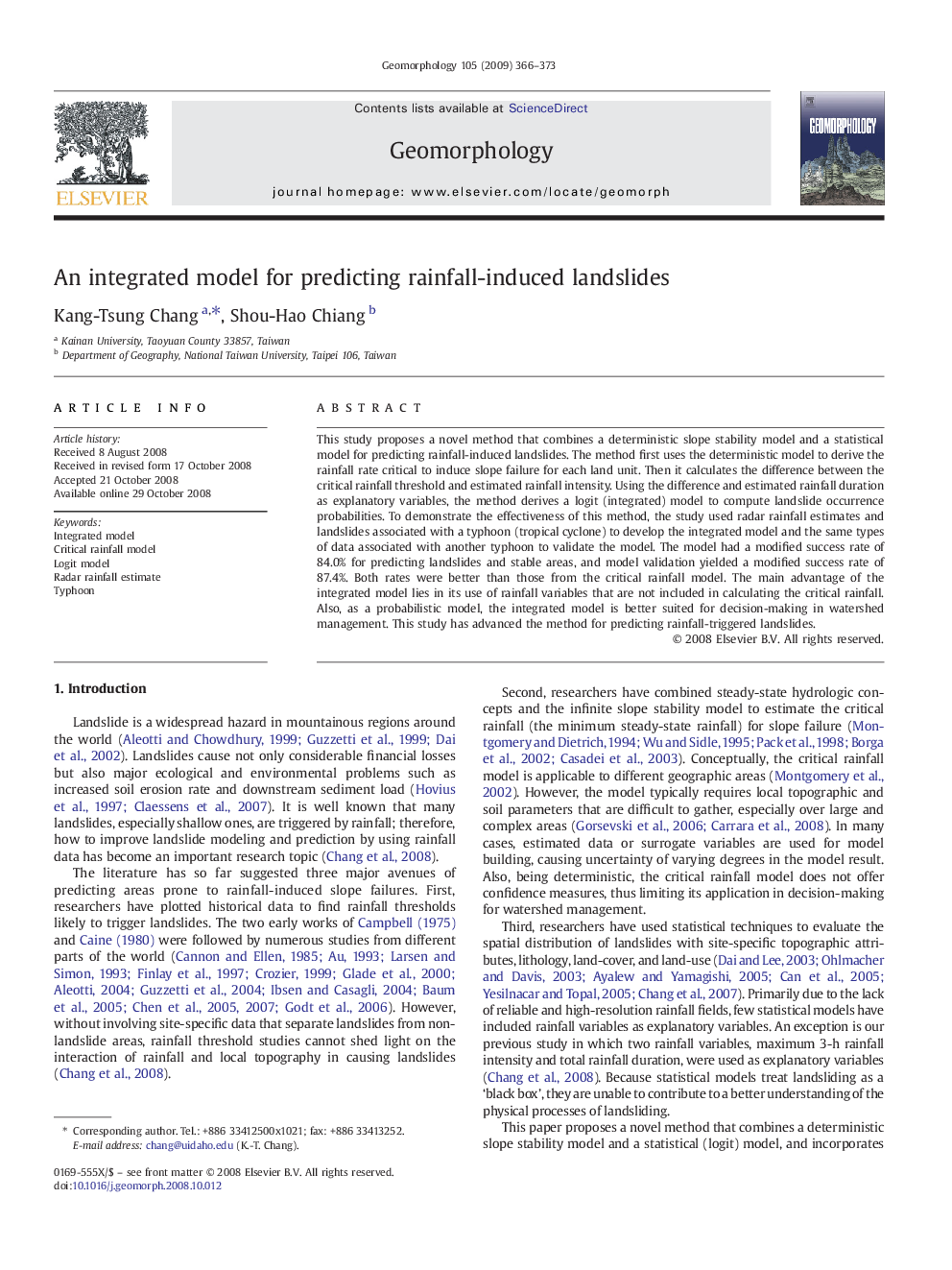| Article ID | Journal | Published Year | Pages | File Type |
|---|---|---|---|---|
| 4686456 | Geomorphology | 2009 | 8 Pages |
This study proposes a novel method that combines a deterministic slope stability model and a statistical model for predicting rainfall-induced landslides. The method first uses the deterministic model to derive the rainfall rate critical to induce slope failure for each land unit. Then it calculates the difference between the critical rainfall threshold and estimated rainfall intensity. Using the difference and estimated rainfall duration as explanatory variables, the method derives a logit (integrated) model to compute landslide occurrence probabilities. To demonstrate the effectiveness of this method, the study used radar rainfall estimates and landslides associated with a typhoon (tropical cyclone) to develop the integrated model and the same types of data associated with another typhoon to validate the model. The model had a modified success rate of 84.0% for predicting landslides and stable areas, and model validation yielded a modified success rate of 87.4%. Both rates were better than those from the critical rainfall model. The main advantage of the integrated model lies in its use of rainfall variables that are not included in calculating the critical rainfall. Also, as a probabilistic model, the integrated model is better suited for decision-making in watershed management. This study has advanced the method for predicting rainfall-triggered landslides.
